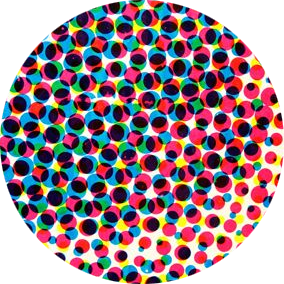Patriarchal Violence as Haunting in Emily Carroll’s “Out of Skin”

In “Out of Skin” Emily Carroll uses a story of isolation, ghosts & revenge to dramatize the real-life horror of being a woman in a society that tolerates violence against women, connecting her supernatural horror to a very real horror and the existential dread it creates. 1/16




This proves quite accurate in the days that follow as the protagonist begins to see and feel the presence of the women’s bodies within all of the objects of her domestic life. “I told myself that it was all in my mind, a trick of the light, but I knew. I KNEW.” 5/16

In this scene, Carroll ably symbolizes the haunting presence of violence against women within a society that seeks to suppress the awareness of said violence. “But what could I do? I couldn’t LEAVE….so I drank out of their skin and I ate out of their breasts…” 6/16

“…and I fell asleep inside their mouth with spools of their hair for my pillow.” Eventually, the cabin itself becomes constituted of the women’s flesh, even gaining the power of speech to mock the protagonist. “‘So foolish,’ laughs the meat of my house.” 7/16

When their killer, a casual lover of the protagonist, arrives, he fails to notice the haunting until he is confronted by the protagonist. As he tries to leave, the dead’s skin sticks to him, follows him, and binds him, dead, to a tree that had grown from the original grave. 8/16

When the framing of the comic turns back to see our protagonist, her eyes have been altered to resemble that of the dead women. While this signals transformation in general, it also signals perception specifically. She sees the world differently now. She sees it as they did. 9/16

This shift in perception is supported by the climactic monologue of the story: “I can feel today will be the last time I see him. But when I think of him from now on, it will be him looking out from all that skin.” Thus she will perceive the violence that he is draped in. 10/16

Overall the agents of the story that spur this transformation from innocence to perception of violence against women are two things: 1) nature (a downpour uncovers the grave) and 2) the voices of the dead, demanding justice. Of course, 1 and 2 might be the same thing here. 11/16

Justice here can only be achieved with the help and support of the living, premised on their awareness (despite the mental implications of holding that awareness in one’s mind). It is a horrible cost to ask of the protagonist, a tragedy in itself. 12/16

She fights against the dawning metaphorical awareness. She buries the bodies, she bars the door against them, she pretends she doesn’t see again and again, but upon first discovering the bodies, it was a foregone conclusion, as the ghosts said: they are “already inside.” 13/16

Enhancing the story is Carroll’s use of a ghostly pale colour palette juxtaposed flashes of red. The red is usually reserved to create stark contrasts with the blood of the story, but it is also the colour of the protagonist’s dress – again establishing a haunting parallel. 14/16

Perhaps unintentionally, the red dress harkens to the observance of Red Dress Day, held yearly in honor of missing and murdered Indigenous women under the belief that red is the colour that the spirits of the dead women can see – guiding them home. 15/16

In all of this, Emily Carroll generates a potent bit of horror simply by re-staging the existential horror that many women face within a society that implicitly – and sometimes explicitly – tolerates violence against women. 16/16
This thread has a video version! Watch here or on YouTube.
